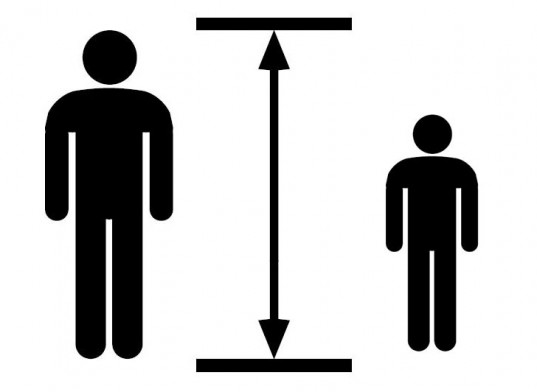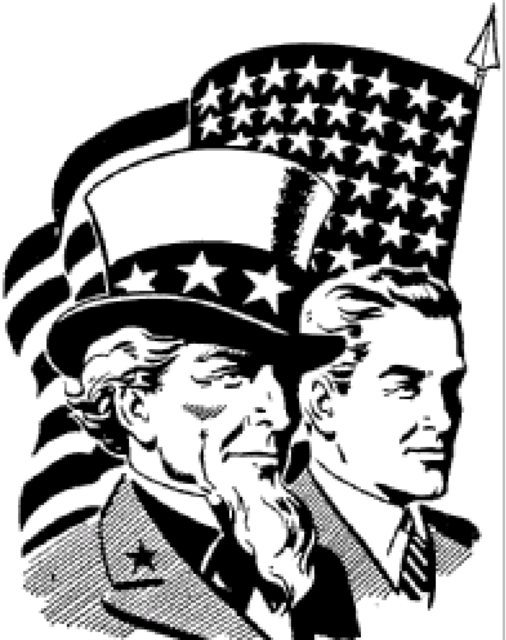As a Workforce, the Government is Not Large
The federal civilian workforce has expanded negligibly, to approximately what it was when Dwight Eisenhower was elected in 1952 - at the same time federal undertakings have quintupled, and the federal policy agenda has expanded, on matters which didn’t previously exist
(health care insurance, primary and secondary school quality, crime, drug abuse, campaign finance, gun control, occupational safety, etc.)
Look beyond the federal employees
By George Will, February 28, 2017
In 1960, when John Kennedy was elected president, America’s population was 180 million and it had approximately 1.8 million federal bureaucrats (not counting uniformed military personnel and postal workers).
Fifty-seven years later, with seven new Cabinet agencies, and myriad new sub-Cabinet agencies (e.g., the Environmental Protection Agency), and a slew of matters on the federal policy agenda that were virtually absent in 1960 (health care insurance, primary and secondary school quality, crime, drug abuse, campaign finance, gun control, occupational safety, etc.), and with a population of 324 million, there are only about 2 million federal bureaucrats.
So, since 1960, federal spending, adjusted for inflation, has quintupled and federal undertakings have multiplied like dandelions, but the federal civilian workforce has expanded negligibly, to approximately what it was when Dwight Eisenhower was elected in 1952. Does this mean that “big government” is not really big? And that by doing more with not many more employees it has accomplished prodigies of per-worker productivity? John J. DiIulio Jr., of the University of Pennsylvania and the Brookings Institution, says: Hardly.
In his 2014 book “Bring Back the Bureaucrats,” he argued that because the public is, at least philosophically, against “big government,” government has prudently become stealthy about how it becomes bigger. In a new Brookings paper, he demonstrates that government expands by indirection, using three kinds of “administrative proxies” — state and local government, for-profit businesses, and nonprofit organizations.
Since 1960, the number of state and local government employees has tripled to more than 18 million, a growth driven by federal money. For example, the EPA has fewer than 20,000 employees, but 90 percent of EPA programs are completely administered by thousands of state government employees, largely funded by Washington.
Spreading the wealth
A quarter of the federal budget is administered by the fewer than 5,000 employees of the Centers for Medicare and Medicaid Services — and by the states, at least half of whose administrative costs are paid by CMS. Various federal crime and homeland security bills help fund local police departments.
“By conservative estimates,” DiIulio writes, “there are about 3 million state and local government workers” — about 50 percent more than the number of federal workers — “funded via federal grants and contracts.”
Then there are for-profit contractors, used, DiIulio says, “by every federal department, bureau and agency.”
Finally, “employment in the tax-exempt or independent sector more than doubled between 1977 and 2012 to more than 11 million.” Approximately one-third of the revenues to nonprofits (e.g., Planned Parenthood) flow in one way or another from government.
“If,” DiIulio calculates, “only one-fifth of the 11 million nonprofit sector employees owe their jobs to federal or intergovernmental grant, contract or fee funding, that’s 2.2 million workers” — slightly more than the official federal workforce.
To which add the estimated 7.5 million for-profit contractors. Plus the conservative estimate of 3 million federally funded employees of state and local governments. To this total of more than 12 million, add the approximately 2 million actual federal employees. This 14 million is about 10 million more than the federal employees and contractors during the Eisenhower administration.
So, today’s government is indeed big, but dispersed to disguise its size. Many Americans are rhetorically conservative but behaviorally liberal. So, they are given government that is not limited but overleveraged — debt-financed, meaning partially paid for by future generations — and administered by proxies.
The government/for-profit contractor/nonprofit complex consumes 40 percent of GDP. Just don’t upset anyone by calling it “big government.”
Federal Agenda
Federal Workforce
a campaign for Congress to
support civil service
National Federation of
Federal Employees
Chicago, IL
We Work for America
Everyday

